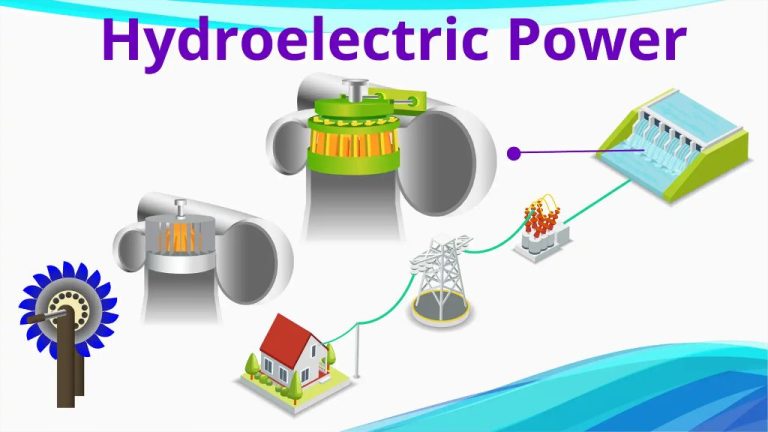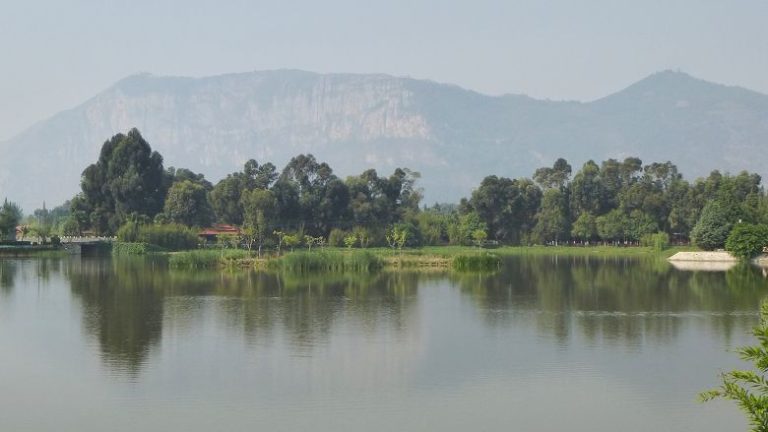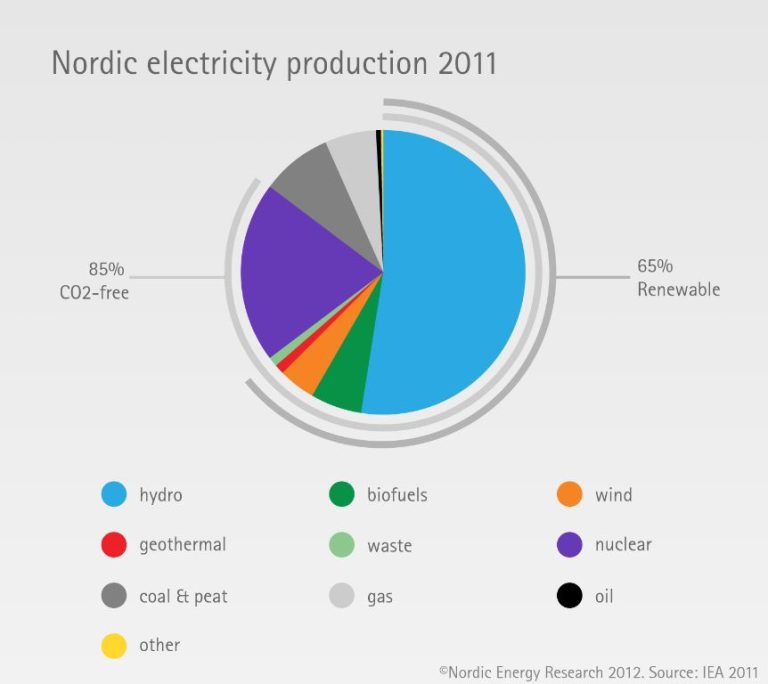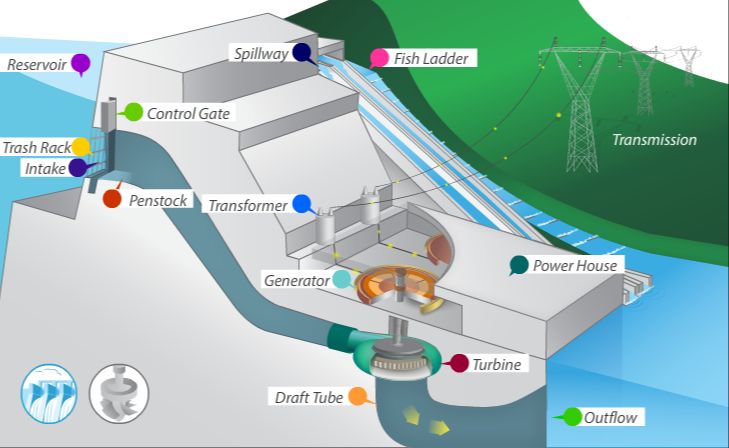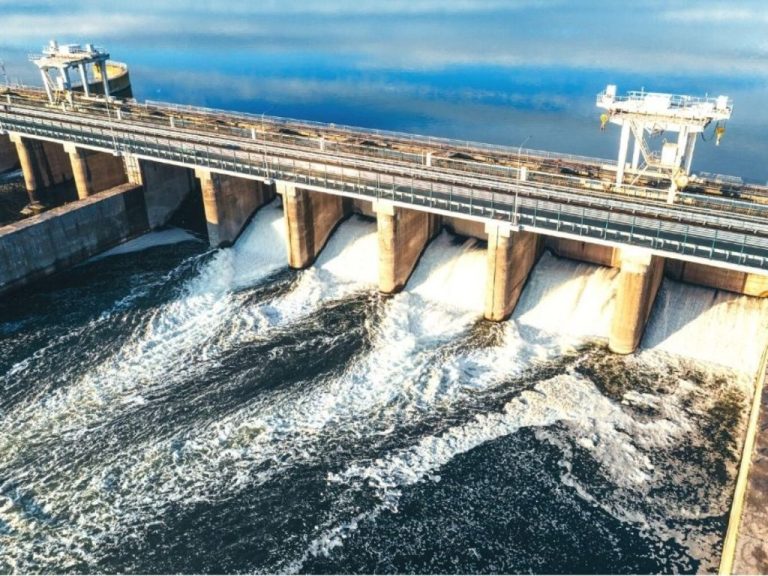What Is Hydroelectricity In Scientific Terms?
Hydroelectricity is electricity that is generated using the energy from flowing water. It is one of the oldest forms of renewable energy and has been used to produce electricity since the late 19th century (https://www.britannica.com/science/hydroelectric-power). It is considered a clean, renewable source of energy and currently provides approximately 16% of the world’s electricity (https://en.wikipedia.org/wiki/Hydroelectricity).
Hydroelectric power plants capture the energy of flowing water to produce electricity. The flow of water spins large turbines that are connected to generators. The motion of the turbines causes the generators to rotate and convert the mechanical energy into electrical energy. The electric current is then transformed to a higher voltage that is suitable for transmission over long distances.
Hydroelectricity has been an important renewable power source for over a century now. The first hydroelectric power plants were built in the late 1800s in the U.S. and Europe. As technology has advanced, hydroelectric dams and power plants have become larger and generate even more electricity. Hydroelectricity remains essential today as both an affordable and sustainable energy supply.
Compared to fossil fuels, hydroelectricity produces much lower amounts of greenhouse gases and other pollutants. It is considered one of the cleanest and most environmentally friendly sources of renewable energy. With growing concern over climate change and energy security, hydroelectricity is likely to remain a key part of the global renewable energy mix into the future.
How Hydroelectric Power Plants Work
Hydroelectric power plants convert the energy from flowing water into electricity using a process that involves several key components (https://www.energy.gov/eere/water/how-hydropower-works).
A hydroelectric facility is usually located on a river near a dam. The dam stores river water in a reservoir and controls its flow. The water in the reservoir has potential energy because of its elevation. When the water is released from the reservoir, the potential energy gets converted into kinetic energy as it flows through pipes called penstocks.
The flowing water spins hydraulic turbines at high speeds. There are two main types of turbines used in hydroelectric plants – impulse and reaction. Impulse turbines are powered by one or more water jets hitting runner buckets. Reaction turbines have fixed runner blades that water flows through, causing the runner to spin. In both cases, the turbine shaft is connected to the rotor of an electric generator (https://www.eia.gov/energyexplained/hydropower/).
As the turbine blades spin, so do magnetic coils within the generator. The motion of the coils within a magnetic field induces an electric field, generating electricity. The electricity is then transformed to higher voltages and transmitted through power lines to homes, businesses, and the electric grid.
Types of Hydroelectric Facilities
There are three main types of hydroelectric facilities: run-of-river, impoundment/dam, and pumped storage. Each has its own advantages and disadvantages.
Run-of-river plants channel a portion of a river’s water through a penstock to turn turbines and generate electricity. These plants do not require dams or reservoirs, making their environmental impact relatively low (https://www.energy.gov/eere/water/types-hydropower-plants). Run-of-river plants generate a relatively consistent amount of electricity dependent on seasonal river flows.
Impoundment facilities use dams to store river water in a reservoir. Water released from the reservoir flows through turbines to generate electricity. Dams and reservoirs provide energy storage and flood control benefits but can negatively impact fish migration and downstream sediment transport (https://www.hydropower.org/iha/discover-types-of-hydropower).
Pumped storage plants pump water uphill into a reservoir when electricity demand is low so it can be released to generate power when demand is high. Pumped storage provides a way to store energy but requires suitable geography and has high construction costs (https://www.enelgreenpower.com/learning-hub/renewable-energies/hydroelectric-energy/hydroelectric-plants).
Environmental Impacts
Hydroelectric power plants can have significant impacts on the environment. Dams used for hydroelectric generation can obstruct the natural flow of rivers and increase siltation, affecting downstream ecosystems and habitats. When reservoirs are created, large areas of land are flooded permanently, which leads to deforestation and the loss of agricultural land and wildlife habitats (U.S. Geological Survey, 2018).
Specifically, hydroelectric dams can negatively impact water quality, aquatic wildlife, and fish migration patterns. Damming rivers fragments migratory fish habitats and blocks the migration of fish to their natural spawning grounds upstream, reducing reproductive success (U.S. Energy Information Administration, n.d.). Reservoirs created by hydroelectric dams can also negatively impact water temperatures and oxygen levels.
However, there are ways to mitigate these environmental impacts. “Fish ladders” can be constructed to help migratory fish move past dams to access upstream spawning areas. Minimum water flow rates can be maintained downstream of dams to preserve natural river ecology. Erosion control measures, habitat conservation plans, and reservoir water aeration techniques can also help reduce hydroelectricity’s environmental footprint (Union of Concerned Scientists, 2013).
Hydroelectricity Generation Worldwide
Globally, hydroelectricity accounts for over 16% of electricity generation and 71% of renewable energy production [1]. Some countries rely heavily on hydropower for their electricity needs. The top countries for hydroelectricity generation in 2022 were China, Brazil, Canada, the United States, and Russia [2].
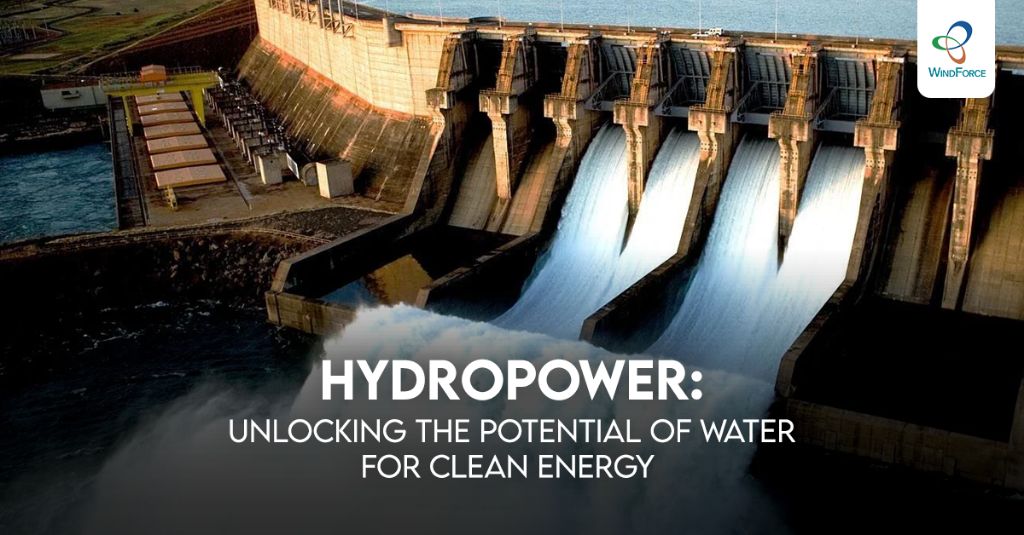
China generates the most hydroelectricity in the world, with over 1,370 terawatt-hours produced in 2022. This represents around 22% of China’s total electricity generation. Brazil gets over 80% of its electricity from hydropower, predominantly from the massive Itaipu Dam. Canada produces the second highest amount globally, generating around 392 terawatt-hours in 2022 [3].
Several countries in Europe rely on hydropower for the majority of their renewable energy production, including Norway (98%), Austria (61%), and Switzerland (57%). However, the potential for new large facilities is limited in most developed countries [4].
Global hydroelectricity generation has continued to grow steadily over the past decade, up over 20% since 2010. The International Hydropower Association projects worldwide capacity will rise from approximately 1,370 gigawatts in 2022 to over 2,000 gigawatts by 2030 [5].
Major Hydroelectric Projects
Some of the largest hydroelectric facilities in the world include the Three Gorges Dam in China, Itaipu Dam on the border of Brazil and Paraguay, and the Guri Dam in Venezuela. These massive projects generate huge amounts of renewable electricity for their respective countries.
The Three Gorges Dam on the Yangtze River in China is the world’s largest power station in terms of installed capacity at 22,500 MW. Construction began in 1993 and was fully completed in 2012. The dam is 7,661 feet long and 610 feet high. Three Gorges produces about 100 terawatt-hours of electricity per year, supplying energy to millions of people (https://en.wikipedia.org/wiki/List_of_largest_hydroelectric_power_stations).
The Itaipu Dam on the Paraná River bordering Brazil and Paraguay is the second largest hydroelectric power station in the world at 14,000 MW of installed capacity. The dam was completed in 1991 after 7 years of construction. Itaipu supplies 17% of Brazil’s electricity and accounts for 90% of Paraguay’s annual electricity consumption (https://www.weforum.org/agenda/2022/12/worlds-largest-hydroelectric-dams-renewable-energy/).
The Guri Dam in Venezuela has the third largest power generating capacity at 10,235 MW. Commissioned in 1986, the Guri hydroelectric facility supplies 73% of Venezuela’s electricity from the Caroni River. Its four turbines have a combined capacity equivalent to the power consumption of Switzerland (https://www.power-technology.com/features/feature-the-10-biggest-hydroelectric-power-plants-in-the-world/).
Small Scale and Micro Hydro
Small scale hydroelectric plants produce up to 100 kilowatts of power and are often used by homeowners and small businesses located near flowing water. Micro hydropower systems make use of a small dammed pool or a pipeline that diverts water from a stream or river to generate electricity. The kinetic energy of the flowing water turns a turbine, which then turns a generator to produce electrical power. The water is passed through the turbine and is returned undamaged back to the stream.
Small scale hydro has several advantages over large hydroelectric dams. Micro hydro systems are easy to design and build using local materials. They provide decentralized power generation and can operate independently off the grid. Small hydro plants have a low impact on the environment compared to large dams, as they do not require reservoirs or damming large rivers. They can provide a low cost way to generate power from existing water infrastructure for rural or remote areas.
An example of a successful micro hydro project is the Ramgad microhydro project in India, which uses a 7 kilowatt microhydro generator to provide electricity to a remote village. Various organizations are working on developing small and micro hydro kits that people can build themselves to generate off-grid electricity from small waterfalls or streams.
Pumped Storage Hydroelectricity
Pumped storage hydroelectricity is a type of hydroelectric energy storage that helps alleviate some of the intermittency issues associated with other renewable energy sources like wind and solar power. It works by using excess electricity to pump water from a lower reservoir up to an upper reservoir. When electricity demand is high, the stored water can then be released from the upper reservoir through a turbine to generate electricity.
The purpose of pumped storage is to store energy and generate electricity during peak demand periods when electricity prices are high. It allows power plants to run at constant and efficient output levels while storing excess generation capacity for later use. Pumped storage can respond to electricity demand changes in seconds, making it a valuable grid balancing resource [1].
Some of the largest pumped storage facilities include the Bath County Pumped Storage Station in Virginia with a generation capacity of 3,003 MW, and the Guangzhou Pumped Storage Power Station in China with a capacity of 2,400 MW [2]. However, pumped storage can also be developed at smaller scales known as “distributed pumped storage”.
The main advantage of pumped storage is its ability to provide grid reliability and flexibility. It has a long lifespan with low maintenance costs. The main limitations are geographic constraints, capital costs, and roundtrip efficiency losses from pumping water uphill [1].
Hydropower and Climate Change
Hydropower plays an important role in reducing greenhouse gas emissions and mitigating climate change. According to the International Hydropower Association, hydropower is a clean energy source that produces very low levels of emissions (https://www.hydropower.org/what-we-do/climate-change). Hydropower plants produce electricity without burning fossil fuels, which makes them a renewable and low-carbon energy source. The IEA estimates that hydropower currently avoids emissions of over 1 billion tons of CO2 every year (https://www.iea.org/events/iea-at-cop27-the-role-of-hydropower-in-achieving-climate-resilience). Expanding hydropower capacity can help reduce reliance on fossil fuels for power generation.
However, climate change also impacts hydropower generation. Rising global temperatures affect precipitation patterns and water availability. More frequent extreme weather events like droughts and floods create challenges for operating hydroelectric dams and managing reservoirs. Climate change may alter river flows and reduce hydropower resources in some regions. Adapting hydropower systems to climate impacts through updated operating rules, capacity expansion, and integration with other renewables will be an important strategy going forward.
Future of Hydroelectricity
The future of hydropower looks bright as the world transitions to clean energy. According to the International Energy Agency (IEA), hydropower generation is projected to grow by over 17% between 2019 and 2040, bringing total capacity to over 2,000 GW by 2040 [1]. The United States Department of Energy released a Hydropower Vision report in 2016 which found the U.S. has the potential to add up to 50 GW of new hydropower capacity by 2050 through upgrades at existing plants and deploying new technologies like pumped storage and marine hydrokinetics [2].
Major growth areas for hydropower include new pumped storage facilities, upgrades to existing infrastructure, small and low-head hydropower, and new marine and hydrokinetic technologies like tidal and wave power. Pumped storage provides crucial grid reliability services and allows integration of more renewables. Upgrading existing dams and turbines can boost output and efficiency. Small hydropower has lower costs and environmental impacts. Marine technologies have enormous potential but are still emerging.
Sustainability will be key for future hydropower growth. New projects must balance energy production with healthy rivers and aquatic ecosystems. Strategies like fish ladders, minimum flow levels, and sediment management help mitigate environmental impacts. Technology advances like advanced turbines, flexible operations, and real-time monitoring further aid sustainability. With care and innovation, hydropower’s growth can support energy needs without compromising ecological needs.

